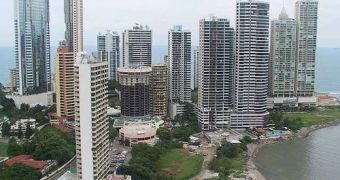By now, most people are well aware of the fact that urban areas are pretty much packed with various harmful exhausts, chemical residues, fine particulates, and even dust, all of which have been proven to cause health conditions to people living in the city.
Up until now, most people believed that these dangerous chemical compounds simply go back and forth between neighborhoods as a response to shifting wind currents, and therefore can be described as moving randomly.
However, a new study recently published in the journal Physics of Fluids, shows that this is not the case.
Quite the contrary: the air pollutants found in urban areas have now been proven to accumulate in very specific locations and even bind themselves to one another so as to create structures.
According to PhysOrg, the scientists who made this discovery based their assumptions on what they already knew with respect to fluids and the ways in which they flow, and interact with one another.
According to researcher Wenbo Tang from the Arizona State University, the team of scientists who investigated this issue was also quite surprised by their discovery, and commented on it as follows: “The unexpected finding is coherent patterns in fluid flows were thought to have no real analog in nature. In previous studies, the existence of these patterns in fluid flows was only verified with idealized 'theoretical' flows. It was not known if such structures were robust enough to manifest in the environment.”
The good news is that, thanks to this research, it will from now on be much easier to pin down the exact areas in cities that need to undergo serious clean-up in order to make sure that the people living there do not come in contact with high amounts of pollutants.
Thus, city high officials can take informed decisions when it comes to protecting public health, and warn citizens about the areas they should be avoiding.
Moreover, we can speculate that a better understanding of how air pollutants 'congregate' in urban areas can facilitate improvements in terms of infrastructure, the end goal being that of maybe modifying our cities in such ways that harmful chemical compounds no longer build up in various regions.

 14 DAY TRIAL //
14 DAY TRIAL //